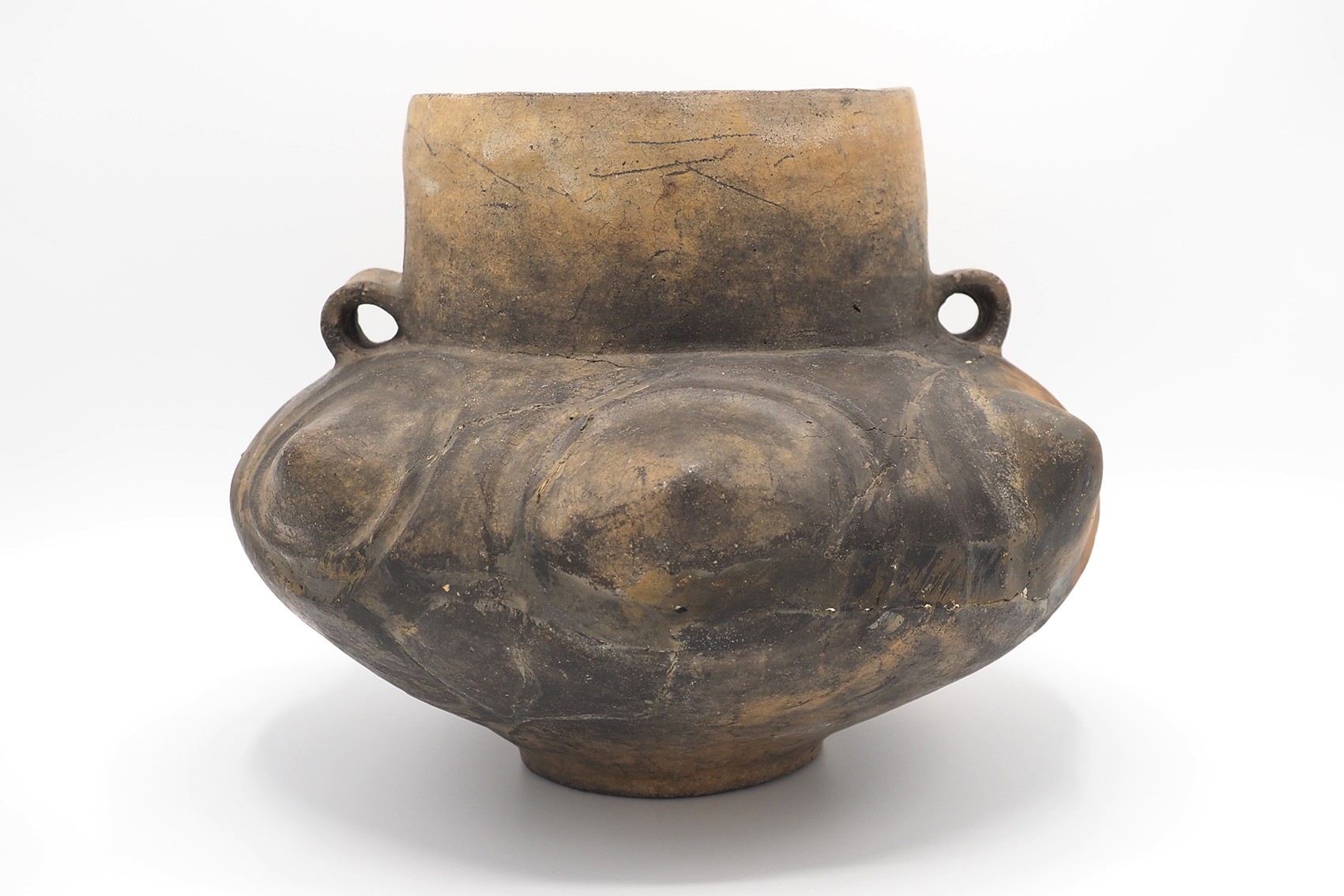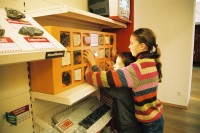Die große Kegelhalsamphore bietet auf ihrer ausladenden Schulter-Bauch-Zone Platz für sechs aufgesetzte Buckel, die von einem doppelten Hof umgeben sind. Die Oberfläche wurde mit einem feinem Tonslip-Überzug geglättet und sorgfältig poliert.
Das Stück stammt aus der nördlichen Gefäßsetzung des überaus reichen Doppelgrabs von Lieske (vgl. IV 0052).
en

